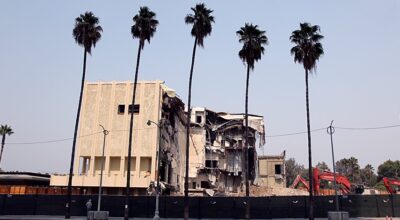Witless Whitney Wasteland
The Whitney Biennial 2008 at New York’s Whitney Museum of American Art is thought of by some as an important but frequently contentious survey of contemporary American art. It unveils the latest trends and directions in the U.S. art scene as well as plumbing the zeitgeist of the nation. If you accept that premise then you might conclude that the country and its art are in very poor shape.
The video posted here features the curators of the 2008 biennial, Henriette Huldisch and Shamim M. Momin, giving an overview of the exhibit. If you can suffer through their unbearable postmodern artspeak, you’ll get a look at the abysmal state of art in American today.
Howard Halle of Time Out New York said the art on display at the 2008 Whitney Biennial “barely rises above the level of graduate school.” Mario Naves of The Observer brusquely dismissed the exhibit as the “blandest biennial in memory,” where “the easy gratifications of spectacle have replaced the rigors of engagement” and where “racial politics are no more meaningful than dressing in Viking drag.” Ariella Budick of Newsday wrote a representative but altogether stinging assessment of the exhibit titled, Whitney Biennial is a wasteland, an acerbic review that not only describes the biennial, but the overall state of much of today’s art:
“The impending recession haunts us; the never-ending war in Iraq drains our strength and our emotional resources. And yet the art market soars blithely upward, impervious to crises at home and abroad. The Whitney is not in the business of selling art, but this Biennial shows that it’s nevertheless caught up in the market’s bizarre hysteria, swooning over mediocrity and prodigally handing out prestige.
The real elephant in the room is the impotence of art. This Biennial is filled with wan political statements, reluctant commodities, unpersuasively subversive gestures and acts of broken narcissism. There are not one but two pieces involving bits of mirror fastened to plywood frames – both of them incomplete reflections, hovering in midair. The entire exhibit seems gripped by awkwardness and a lack of conviction in art’s ability to change lives, refract the world or even just make money.”
Without voluminous wall texts and over intellectualized exhibit catalog entries, William Cordova’s installation, The House that Frank Lloyd Wright built 4 Fred Hampton and Mark Clark, is as cryptic and incomprehensible as any other postmodern mediocrity in the exhibit. A sprawling maze of wood beams that looks like a building under construction, Cordova’s work purportedly concerns the “strangeness of our own detritus and the too-often repressed histories they conceal.” Little is mentioned of the historical figures the installation is named after, and museum goers are simply left to traipse about the faux construction site to wonder who Fred Hampton and Mark Clark might have been.




